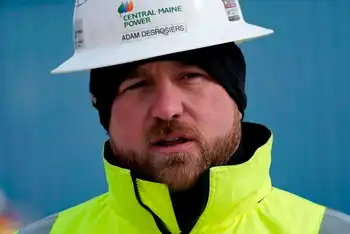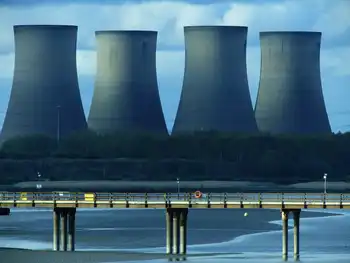Big polluters are dirtier than ever, study shows Cleanup pledge fails to cut emissions
OTTAWA, - - Canada's worst polluters are spewing out more greenhouse gases than ever, failing miserably in a promise to clean up their act, a new study shows.
The report shows that nine of Canada's 15 most prolific producers of greenhouse gases belched significantly more in 1997 than they did seven years earlier.
All 15 companies joined a voluntary reporting program after Canada made a commitment at a summit in Rio de Janeiro to stabilize emissions at 1990 levels by this year.
The study is to be released next week by the Pembina Institute for Appropriate Development, an environmental group that monitors the development of the Western Canadian oilpatch.
The institute's work also shows that although federal and provincial governments passed 88 measures that were supposed to combat global warming in 1995, only a third of those have ever been implemented. Most were "soft" measures, such as public-education programs, that have fallen well short of expectations so far.
The study recommends that Canada move quickly to regulate emissions of greenhouse gases and put in place a program of financial incentives to encourage a move to renewable resources.
"The data as a whole shows that voluntary action to address climate change has been altogether ineffective," said Matthew Bramley, senior policy analyst for the Pembina Institute. "It's breathtaking how irresponsible and negligent those [federal and provincial environment] ministers who got together five years ago and talked about how much they cared about this issue really were."
David MacInnis, spokesman for the Canadian Association of Petroleum Producers, pointed out that electric utilities remain at the top of the list of emitters. He said emissions will come down only when consumers begin changing their habits.
"I don't want to suggest that all the energy-efficient measures that could be put in place have been put in place . . . but quite frankly, companies are only meeting consumer demand," he said.
"Consumers don't make a connection between a purchase of the stuff they want and the energy costs to produce it."
This year, the study says, Canadian emissions of carbon dioxide and similar gases are expected to reach 694 million tonnes. That's 15 per cent above the level that Canada committed to stabilize in 1990.
(At the 1997 Kyoto conference in Japan, Canada committed itself to reduce emissions a further 6 per cent below 1990 levels by 2010. To meet that, the country is expected to have to trim emissions by 26 per cent from current trends, potentially costing billions of dollars in economic development.)
The study's release coincides with a meeting of federal and provincial ministers of energy and environment to consider Canada's strategy to fight climate change. Recommendations put forward by panels of experts who have studied the issue are to be examined in Vancouver starting Monday, but the politicians are expected to announce little in the way of decisive action.
Since the 1990 commitment, Canada's top 15 emitters have increased their emissions more than 7 per cent, pumping more than 162 million tonnes of carbon dioxide and equivalent gases into the air in 1997. A 16th company, integrated oil-and-gas firm Amoco Canada Petroleum Co. Ltd., did not report in 1990 but now ranks among the country's top emitters, adding a further 8.5-million tonnes to the 1997 total.
The biggest increase among the top 15 corporations was seen at Calgary-based Husky Oil Ltd., which increased its emissions 76 per cent, from 3.7 million tonnes in 1990 to 6.6 million in 1997.
Westcoast Energy Inc., a Vancouver-based natural gas utility, saw the second-largest leap, 38 per cent. A spokesman for the company said the numbers don't reflect the company's acquisitions between 1990 and 1997.
Barry Worbets, Husky's manager of health, safety and environment, said the numbers also cast his company in an unfair light. He said two-thirds of the emissions increase can be attributed to a heavy-oil upgrader the company built in Lloydminster, Sask. between the two base years. The company, he said, has recently introduced measures that have reduced annual emissions by 1 million tonnes and cut energy expenditures per barrel of oil by 30 per cent.
The study looks at figures up to 1997, "which is probably the worst year they could have picked for us," Mr. Worbets said. "We've also been very successful -- and we don't make any apologies for that -- in growing the company."
Electrical utility Saskatchewan Power Corp. and Alberta's TransCanada PipeLines Ltd. were the other two industrial giants to show emissions increases of more than one-third. SaskPower saw the biggest overall jump in terms of raw tonnage, increasing emissions from 10.6 million in 1990 to 14.4 million in 1997.
That left the utility heading in the opposite direction from fellow electric utilities TransAlta Corp. and Ontario Hydro, which both decreased emissions (although they remained the top two emitters in the country). A spokesman for SaskPower said the increase at his company was due solely to increased consumer demand.
Mr. Bramley said that kind of talk is just an industry attempt to pass the buck. Consumers, he agreed, need to do more, but responsibility for leadership on this issue has to fall on governments and top corporations. And that just isn't happening, he said.
Particularly distressing to Mr. Bramley is that some of the rise in industrial emissions came not just from heightened production, but because some companies were heading the wrong direction entirely, increasing the amount of greenhouse gases generated per unit of production.
He also said the numbers put industry in a better light than it deserves, since only those companies progressive enough to report their emissions are included in the study.
Related News

Construction starts on disputed $1B electricity corridor
PORTLAND - Construction on part of a $1 billion electricity transmission corridor through sparsely populated woods in western Maine is on hold because of legal action, but that doesn't mean all building has been halted.
Workers installed the first of 829 steel poles Tuesday on a widened portion of the existing corridor that is part of the project near The Forks, as the groundwork is laid for the 145-mile ( 230-kilometre ) New England Clean Energy Connect.
The work is getting started even though the 1st U.S. Circuit Court of Appeals delayed construction of a new 53-mile ( 85-kilometre ) section.
Three conservation…




